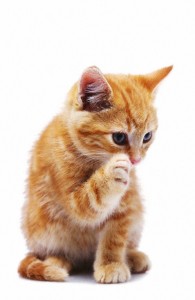 In an era when there are hundreds of different commercial cat food formulas, more cat owners are now choosing to make their own cat food. Making your own cat food is a great way to take complete control over your cat’s diet, and can be fun as well! However, it’s important to know about the best components to use in your homemade cat food formula. This can help ensure that your cat won’t suffer from a nutrient deficiency on their new diet. Here’s a quick guide to help you understand how to make your own cat food at home.
In an era when there are hundreds of different commercial cat food formulas, more cat owners are now choosing to make their own cat food. Making your own cat food is a great way to take complete control over your cat’s diet, and can be fun as well! However, it’s important to know about the best components to use in your homemade cat food formula. This can help ensure that your cat won’t suffer from a nutrient deficiency on their new diet. Here’s a quick guide to help you understand how to make your own cat food at home.
Protein
Since cats are obligate carnivores, the bulk of their food formula should be made up of protein. Though vegetable protein can be an inexpensive way to add protein content, stick to animal proteins. Buy only high quality, hormone-free meat for your cat’s homemade food formula. It’s best to use the same standards as you would when purchasing meat for your own diet. Choose fresh meat that comes from a clean, respectable source. Never use by-products, pre-made packaged meat meals or other processed proteins, since it can be difficult to assess the quality of these proteins.
Carbohydrates
Many people mistakenly believe that your cat’s diet should have a high percentage of grains. However, in the wild, the carbohydrates that cats receive are primarily from vegetable sources. Including fresh vegetables in your cat’s food formula is a great way to boost the nutrient content and add some complex carbohydrates. Most vegetables can be used in your homemade cat food formula. However, never add garlic or onions to your cat’s food, since these vegetables can be extremely toxic to cats.
Fats
Fat is actually an essential component of your cat’s diet. However, the trick is to choose high-quality fats that have nutritional benefits. If you use fish oil as your cat’s source of fats, be sure that the fish oil is free of ethoxyquin. Olive oil is another great source of high-quality fats and Omega fatty acids for your cat. Try to stay away from fat sources such as butter, shortening, margarine, vegetable oil, beef tallow and canola oil. Though these may add fat content to your homemade cat food formula, it’s best to stick with fats that are higher quality. This way, you can ensure that your cat is getting the best source of nutritional fats.